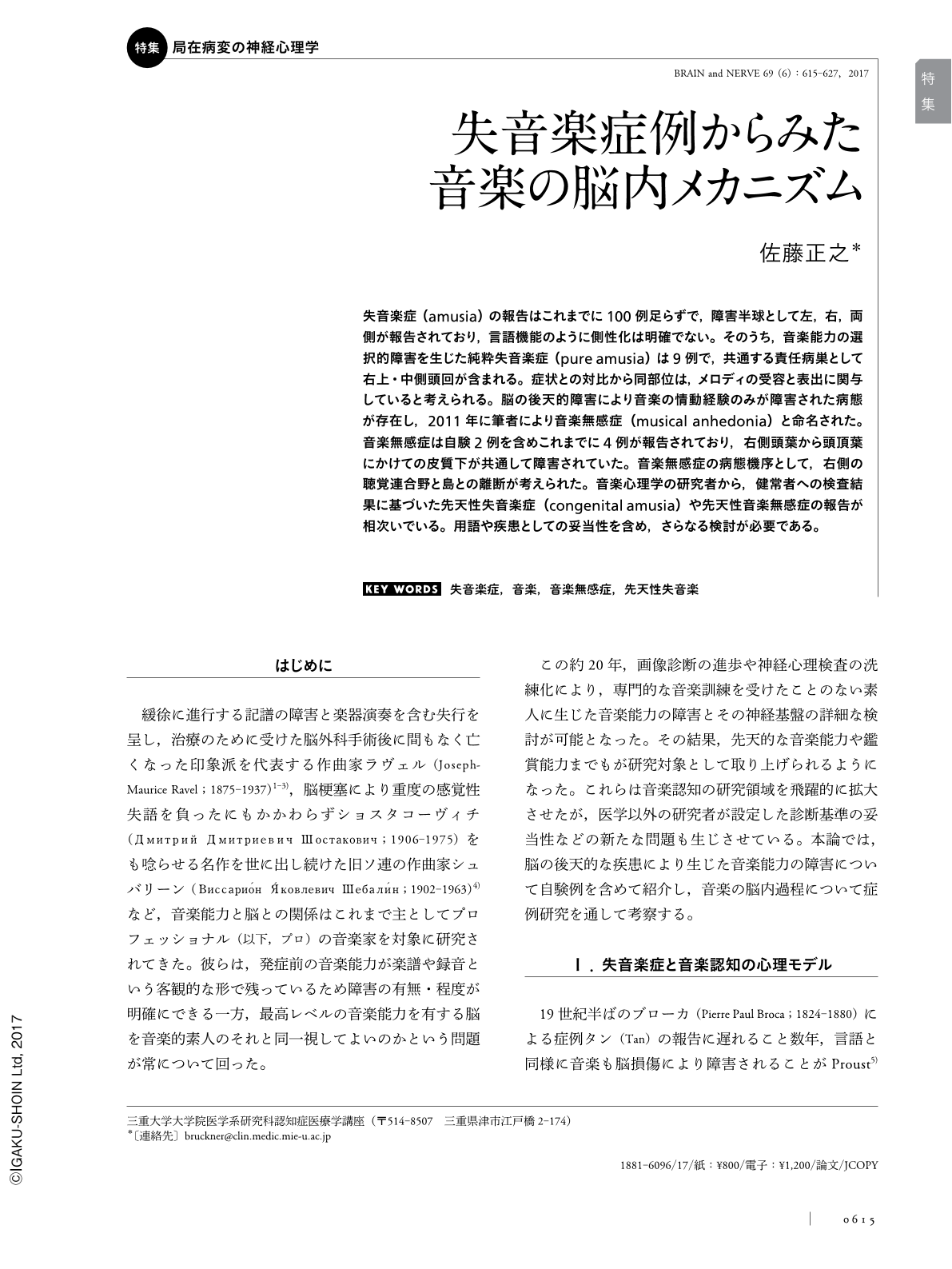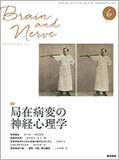Japanese
English
- 有料閲覧
- Abstract 文献概要
- 1ページ目 Look Inside
- 参考文献 Reference
失音楽症(amusia)の報告はこれまでに100例足らずで,障害半球として左,右,両側が報告されており,言語機能のように側性化は明確でない。そのうち,音楽能力の選択的障害を生じた純粋失音楽症(pure amusia)は9例で,共通する責任病巣として右上・中側頭回が含まれる。症状との対比から同部位は,メロディの受容と表出に関与していると考えられる。脳の後天的障害により音楽の情動経験のみが障害された病態が存在し,2011年に筆者により音楽無感症(musical anhedonia)と命名された。音楽無感症は自験2例を含めこれまでに4例が報告されており,右側頭葉から頭頂葉にかけての皮質下が共通して障害されていた。音楽無感症の病態機序として,右側の聴覚連合野と島との離断が考えられた。音楽心理学の研究者から,健常者への検査結果に基づいた先天性失音楽症(congenital amusia)や先天性音楽無感症の報告が相次いでいる。用語や疾患としての妥当性を含め,さらなる検討が必要である。
Abstract
Less than 100 cases of amusia have been reported. The sites of lesion in these patients have been located in the right, left, and bilateral cerebral hemisphere(s); therefore the lateralization of amusia is not as clear as that of aphasia. Among them, pure amusia, the selective loss of musical ability due to acquired brain damage, was observed only in nine cases. The cases of pure amusia included right superior and middle temporal gyrus lesion involvement. By comparing the lesion sites and symptoms of pure amusia, it might be assumed that the right superior/middle temporal gyrus participates in the perception and expression of melody. In 2011, the selective loss of the experience of musical emotion was termed musical anhedonia by the presenting author. Only four cases of musical anhedonia have been reported, and in those the cortical and subcortical regions of the right temporoparietal area were commonly damaged. It was supposed that musical anhedonia was caused by the disconnection between the right auditory association cortices and the insula. Based on the results of the assessment of healthy young participants, there have been many reports of congenital amusia or musical anhedonia by musical psychologists. Further studies are needed in order to determine whether these diseases actually exist.

Copyright © 2017, Igaku-Shoin Ltd. All rights reserved.


